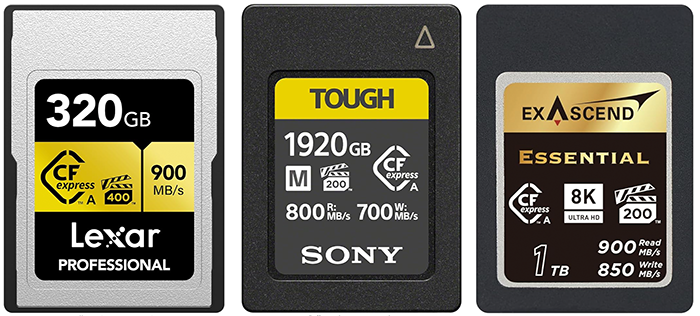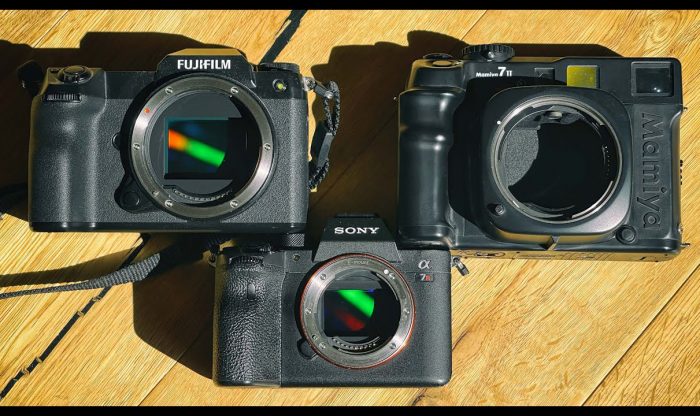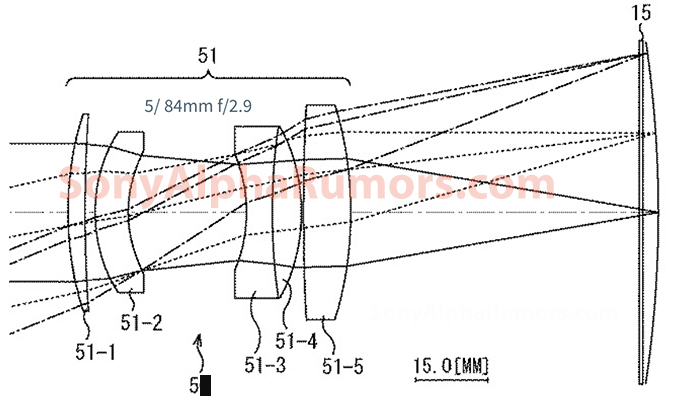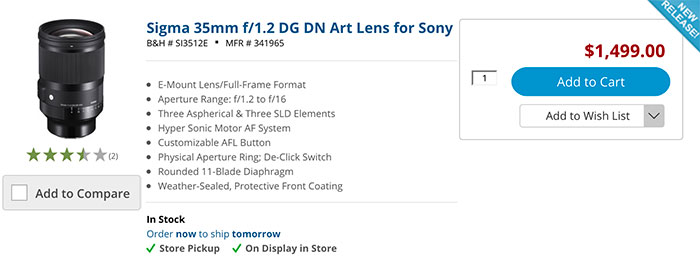The shutter vibration issue explained by Joseph Holmes.
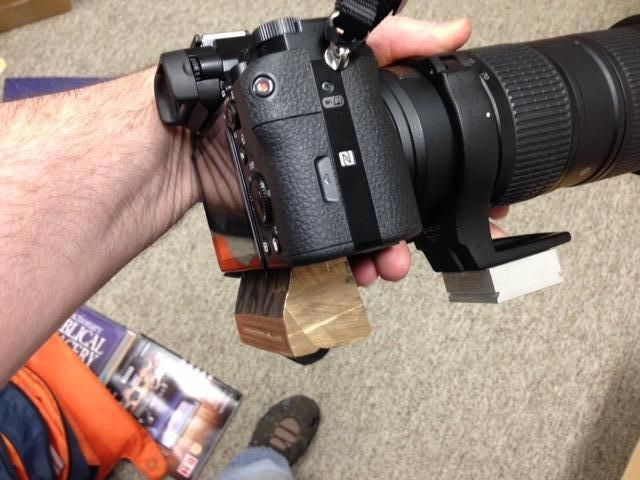
Here are pix of the three parts I will use, prior to their heading off to the local machine shop yesterday.
Guest post by Joseph Holmes.
Unfortunately, Sony has a problem with the A7R which is serious for a significant segment of uses, involving longer lenses on a tripod, and especially lenses which are connected via a lens foot or adapter foot to the tripod. The first curtain shutter shake is too great to avoid motion blur in many longer-lens situations. A firmware update to provide an option to add a delay between the two motions of the first curtain would be a big help, but might not be enough to solve the problem entirely.
Lloyd Chambers at DigLloyd.com, and two more of us (including myself), in separate series of carefully done experiments, have found consistent, clear and certain proof of a serious issue with the camera bouncing too much during exposures at various speeds, typically 1/100th of a second being the worst. The shutter shake seems, if anything, to be worse than when the same lens is connected to a Canon 5D II with full mirror slap. The motion is primarily in the direction of the shutter: up and down with a horizontal image and side to side with a vertical image (see samples below).
This happens more with longer lenses and more with lenses where the camera itself is not mounted directly to the tripod, rather the lens is mounted via its own foot, or its mounted to the foot of an adapter, so the camera is at the end of a “branch” sticking out in space, unsupported so that it is more readily made to shake. The further the mounting point is from the camera’s sensor plane, the worse the motion blur in the capture. And it is also highly dependent on the shutter speed, with longer exposures like 1/4 and longer being unaffected and the worst blur usually occurring at 1/100th of a second (strangely). Lloyd also observed a sudden up-tick in motion blur at 1/500th with a Leica 280 mm lens. I have been seeing the problem at focal lengths between 120 and 160mm (the longest lens I have which will work on the camera at the moment), as has my friend Mike Schultz, with exposures between 100 mm and 280 mm. Our results and observations are in close agreement.
I just tried a series of hand-held exposures with a fairly light weight, f3.5 150mm non-native lens at both 1/100th and 1/160th, in both horizontal and vertical position, and there was no clear pattern of shutter vibration causing movement in the direction of shutter movement, at either shutter speed. Some where sharp, some obviously moved. So that’s good, as this implies that the self-induced vibration is not necessarily affecting hand-held cameras, for whatever reason.
It has also been conclusively shown by Lloyd’s testing that the electronic first curtain of the A7 eliminates all of this pernicious camera shake. (Unless there is another important difference between the two shutters, where the second curtain of the A7R blurs the exposure as it’s closing and that of the A7 other does not, which seems very unlikely.)
Further, Mike and I have shown that attaching a certain amount of weight to the camera can solve the problem completely. We are building 24-ounce weights (including the weight of a small, Arca-Swiss type screw-knob clamp, the L-plate and a metal block) to connect to the base of the camera when using longer lenses, especially when they are not native lenses with the camera connected directly to the tripod. I tested a 26-ounce weight, screwed to the bottom of the camera for horizontal exposures and found it highly effective. Mike tested a 24-ounce metal weight screwed directly to the base of the camera and it was highly effective for both horizontal and vertical camera position. If an L-plate such as the new one from Really Right Stuff, and a compact screw clamp are combined with a block of metal, the metal would need to weigh only about 17 ounces and can therefore be a piece of brass or stainless steel about 1 x 1.25 x 3″ long with simply a hole drilled through the middle in the short direction, or drilled through, up to a quarter inch behind the middle, because the shutter is about 1/4″ ahead of the tripod screw hole of the camera and moving the bar forward a bit would center it right beneath the shutter for optimal effect. Such a piece of stainless will weigh about 17 oz, so combined with the L-plate and clamp, the total is 24 ounces. A piece of brass would, depending on the alloy chosen, probably weight 1 or 2 ounces more. 13 ounces doesn’t work very well at all. We have not tried a series of several different weights, owing to the inconvenience of performing such tests, but a total weight of 24 ounces is looking at least close to ideal
I suspect that when the Sony G 70-200 f4 OSS lens appears, we will find that even at 200mm on a tripod, it is little affected by this malady, because the shake is well prevented by the Arca-Swiss style clamp on the tripod head with the camera directly connected via the base of an L-plate to the tripod. When mounting the same lens on its tripod foot for better weight balance and less strain on the lens mount (the 70-200 lens is only 840 grams so it’s not too heavy to mount directly and have the camera support it), the vibration issue is very likely to be worse, and may show motion at speeds close to 1/100th, especially when closer to 200 mm, or they may not be bad enough to notice. We’ll see.
But Sony needs to address this critical issue, which is preventing many uses of the camera from allowing us to get sharp pictures, except by using the dead weight. Notice that of all the samples published on the web, there have been few, if any, longer lens captures, and the method of connection to the tripod and use of adapters can have a big impact on the result.
In no case have I seen motion at focal lengths of 85 mm and below, even when adapting the lens to the camera and supporting the assembly by the adapter’s foot. Native lenses may be fairly safe from obvious movement out to 150mm when the camera is mounted directly to the tripod, at all shutter speeds, horizontal or vertical camera, but only testing them will tell. Vertical is apt to be worse, however.
We very much hope that Sony changes the firmware so as to allow an option to introduce a delay between the closing of the first curtain and the opening of the first curtain, to begin the exposure. It would appear that this delay would be very effective at diminishing the additional effect of the first motion of the first curtain to nearly nothing if it is only as long as 1/10th of a second, and would be a substantial improvement if it were even a delay of just 1/40th of a second, as evidence shows that this vibration is dampened very quickly. Or they could, with a new soft shutter option, require a double push of a remote to trip the shutter in this special mode. About half the vibration would remain, but it would be a big help to reduce it by half.
Leica did provide a special solution, something very much like this with the M240, I gather. It is certainly unfortunate that we didn’t get an electronic first curtain option with the A7R, and it remains mysterious why it didn’t happen. Hopefully a follow on camera will not omit this vital feature for tripod work with a very light weight camera. But in the meantime a modest firmware update could solve the problem ABOUT half way and help a lot. All of my tripod-shooting photographer friends care about this issue a great deal. The whole point of the camera is defeated if its fine detail is ruined by shutter shake.
Here are two examples made by Mike (100% sections). The first is the Nikkor 70-200 f4 VR lens at 1/100th and 800 ISO at 180 mm, the A7R turned vertical, and the lens connected to a sturdy tripod via the lens’ foot. The second is with the 24-ounce brass weight screwed directly into the tripod hole of the camera (no L-plate or clamp). These results (the one with the shake) are typical of what all three of us are seeing. Shorter lenses are better, longer are worse. And this lens, if the camera+lens had been mounted directly to the tripod, might have given a fine result, or a least a much less damaged result.
When the camera is hanging out on the end of the camera-lens mass, it is very readily moved by small forces!
Addendum:
As an addendum to my letter about the shutter vibration issue, I wanted to mention that my friend Mike and I have discussed what would be an optimal solution for Sony to allow the two movements of the first curtain to be separated in time, so as to cut vibrations during the exposure by roughly half.
After considering various options, we prefer a mode which would work exactly like a conventional MUP (mirror up) mode. When this “Delayed Shutter” mode is enabled, the first press of the shutter release (on a remote or on the camera) would cause the first shutter curtain to close, ending live view. The second press would then begin the exposure sequence by opening the first curtain, which is then followed by the second curtain closing, then re-opening to again begin live view.
I think we would find that even with a shutter speed of 1/100th of a second and the camera turned to vertical (portrait) position, that a delay between the two presses of as little as 1/4 second would still achieve the full benefit of the Delayed Shutter mode. Click, click. Simple, fast, and familiar to all of us tripod users. This would still be faster than the traditional process, where we wait 2 to 6 seconds after mirror up for the camera to calm down before starting an exposure where fine detail matters a lot. This approach, rather than inserting a fixed delay, would also allow us to choose precisely when we want the exposure to begin, which is important in many cases. It just wears out the shutter button on the remote twice as fast, along with the battery of a wireless remote. :-) Fully sharp results with longer lenses may still require the use of a dead weight as described, but only testing will tell. The weight seems to be highly effective, but cameras can wiggle lots of different ways and some setups may not even work just right with the weight at some shutter speeds, after a firmware fix. I sure hope they do as I really like this camera. I’ve been waiting a very long time for a camera that can do what it does
Regards,
Joseph Holmes
Kensington, California
Without the dead weight, camera vertical, so shake is left-right:
With the weight attached, everything else the same:
Editor’s note: This is a SAR readers article. Submit your articles at sonyalpharumors@gmail.com if you want them to be posted here. Thanks!
